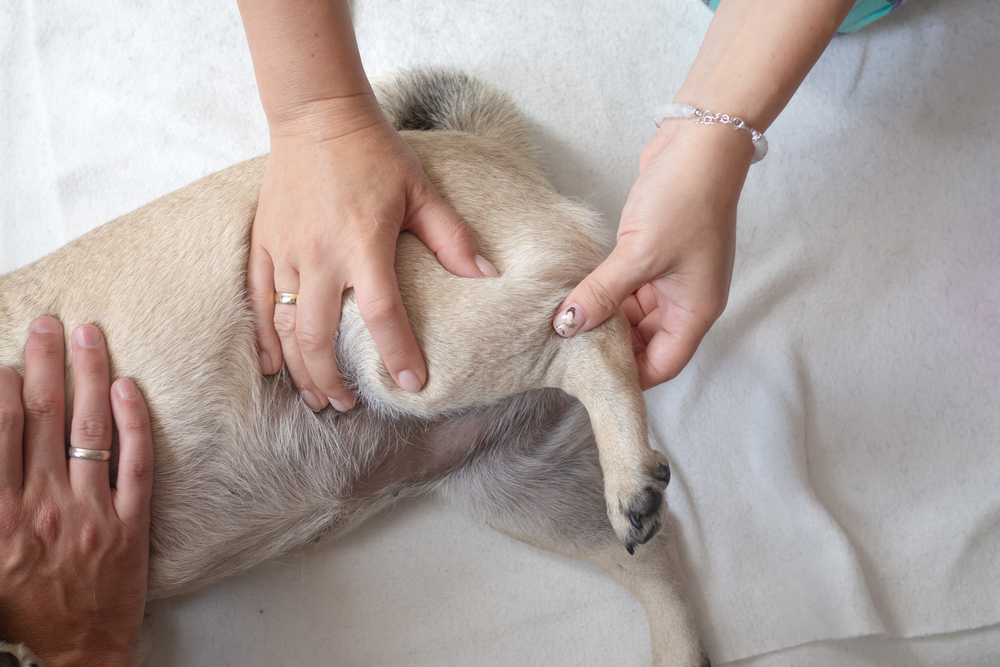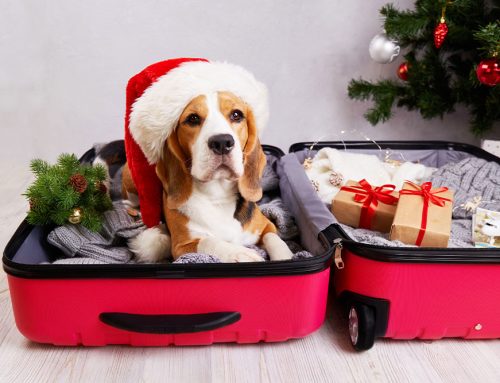Tornadoes, floods, fires, and hurricanes are all natural disasters that strike suddenly and severely, and you must prepare your family, and your pet, for such emergencies. From emergency kits to post-disaster care, know how to keep your pet safe and accounted for in the case of a disaster.
Make a pet emergency kit
As you do for yourself or your family, make a ready-to-go emergency kit for your pet that includes:
- Food and water — Pack several days’ worth of food and water for each pet, to ensure they have enough until you can get more.
- Leash or carrier — For dogs or cats who can be leash-walked, pack a leash and harness, so you can keep your pet safe and they cannot try to escape because they are scared. If necessary, keep small pets in a carrier for easy transport and to prevent escape.
- Medications and medical records — Ensure you take your pet’s medical records and their medications for several days.
- Identification — Pack some form of your pet’s identification, such as a collar with an ID tag. Better yet, microchip your pet if they have not been chipped already. Microchips are permanent and cannot be lost like a collar, so a microchipped pet is more likely to be reunited with their owner should they become lost. Also, take some recent pictures of your pet for help with identification if they run away.
- First aid kit — A pet first aid kit should include bandages, antiseptic wipes or ointments, a muzzle, and more.
- Hygiene — Include waste bags for dogs and litter and a litter box for cats.
Prepare your pet for evacuation
When you need to evacuate from your home, knowing exactly the steps you would take to get yourself and your pet out safely is crucial. Plan your temporary destinations and routes, and ensure your emergency kit is easily accessible. Identify pet-friendly hotels or shelters, or a friend or family who will take care of your pet in an emergency. Practice evacuating beforehand, so your pet feels comfortable with the process, and they will be less stressed if you do have to leave.
Identify a safe room for your pet
If you decide that evacuation is unnecessary or impossible, identify a safe room in your house where you and your pet can stay until the disaster passes. Ideally, this room is safe and secure with no windows, to prevent injury from broken glass. Stock the room with your pet’s emergency kit, food and water, and an extra crate or carrier to confine your pet. Spend time in the safe room with your pet so they feel comfortable, rather than scared, when they go there.
Post-disaster care for your pet

The struggles of a natural disaster don’t end when the disaster itself is over. Your pet may be more stressed and confused as you return to your normal life, so help them return to their regular routine.
- Create a schedule — Your pet will be less confused if you return to a consistent schedule, preferably similar to their pre-disaster routine, and create a sense of normalcy.
- Check for injuries — Monitor your pet for long-lasting injuries or behavioral changes. Schedule a checkup with our veterinarian if you are concerned about how the event impacted your pet.
- Offer reassurance — Ensure your pet feels safe again at home with extra love and attention, cuddles, and gentle playtime. Creating a calm environment will reduce their stress.
Natural disasters can be terrifying for people and pets, but you can minimize the fear by being prepared. If you need assistance or have questions about preparing your pet’s emergency or first aid kits, contact Boca Midtowne Animal Hospital. Also, consider a wellness exam, so you know your pet will not have health problems if you do have to evacuate.







Leave A Comment